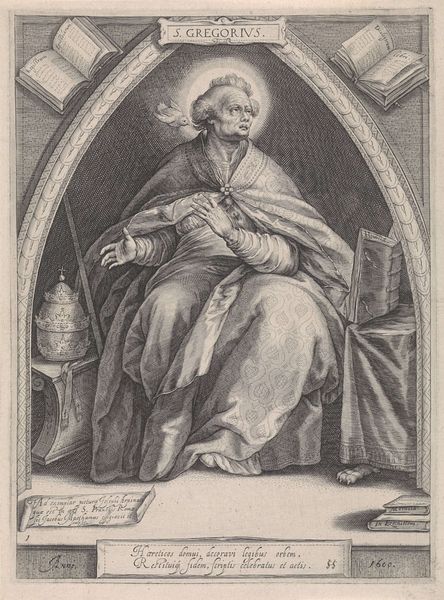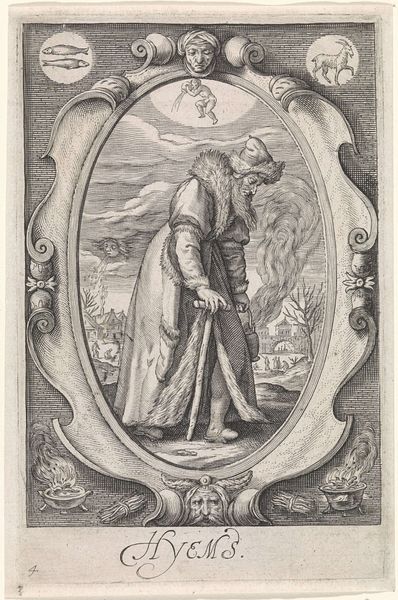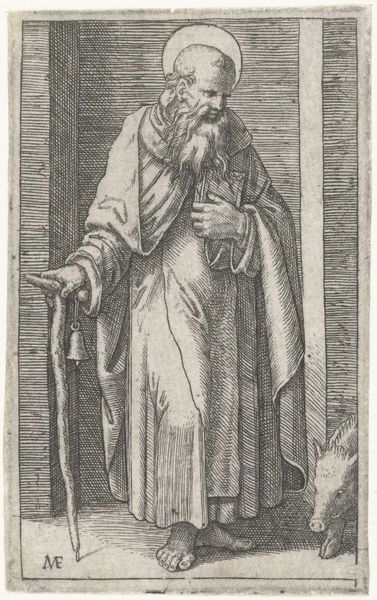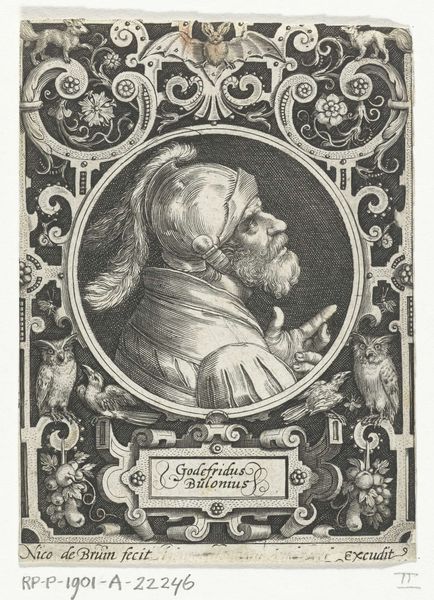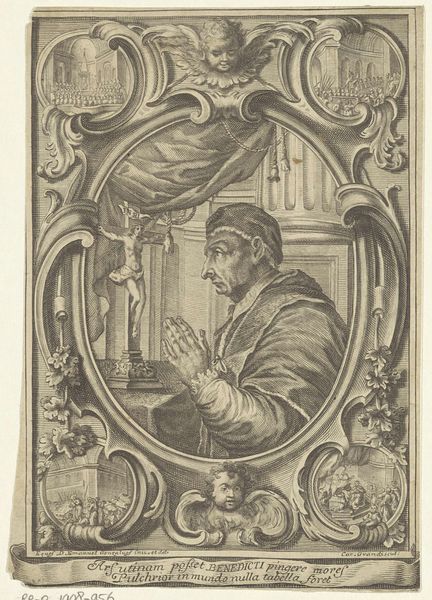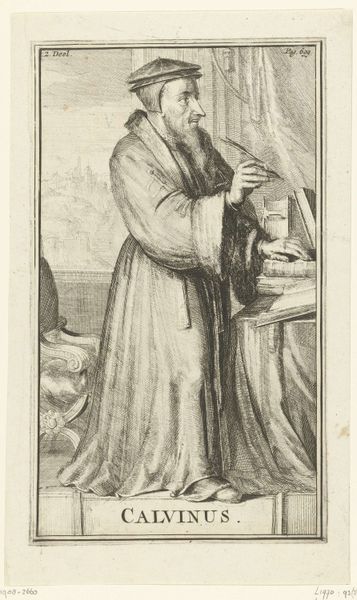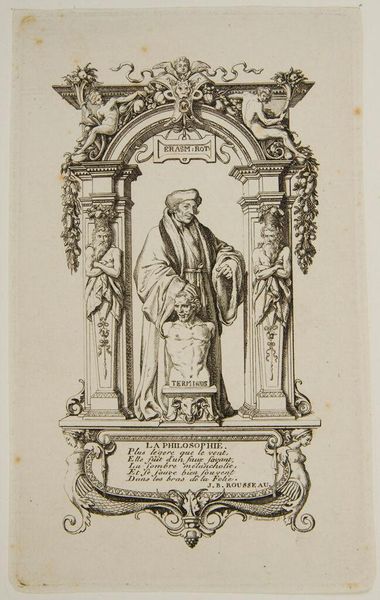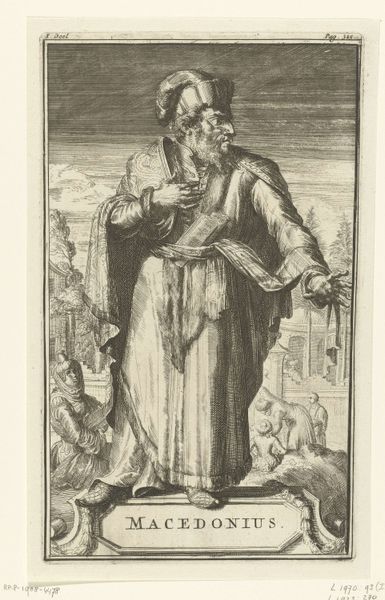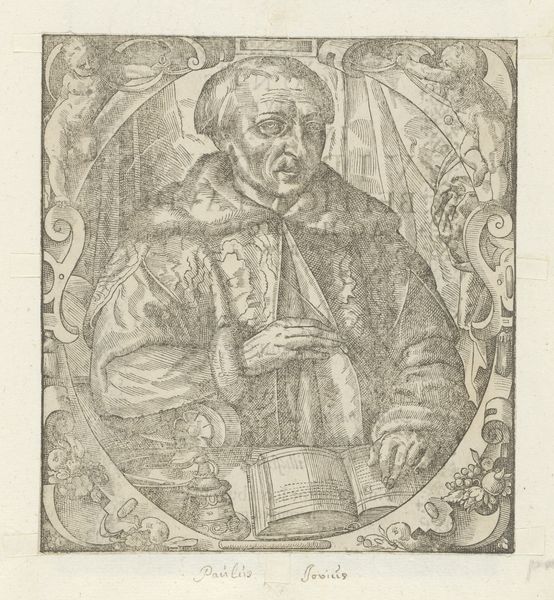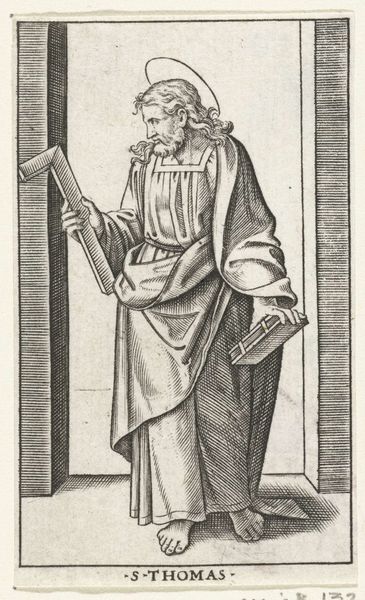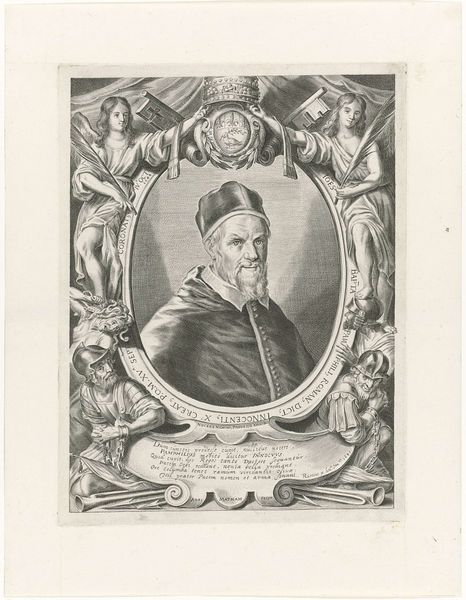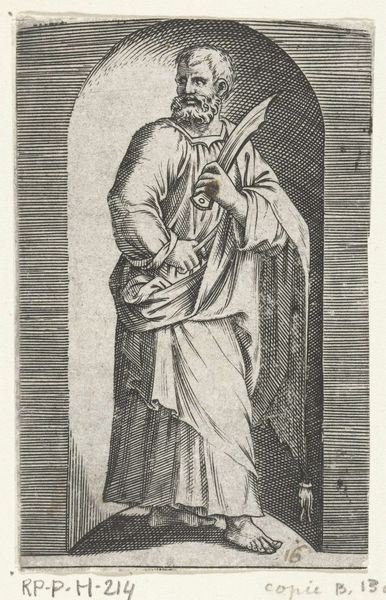
print, engraving
#
portrait
#
baroque
# print
#
islamic-art
#
history-painting
#
engraving
Dimensions: height 321 mm, width 208 mm
Copyright: Rijks Museum: Open Domain
This is Paulus Pontius’s ‘Portret van Mulay Hasan, koning van Tunis’, an engraving of 1603, now at the Rijksmuseum. At first glance, the portrait presents a formal depiction of Mulay Hasan, framed by architectural elements. The composition is structured vertically, drawing the eye from the ornate base, up past the columns, to the figure of Hasan himself. The framing creates a sense of depth and importance, using symbolic elements such as elephants and inscriptions to contextualize the subject's reign. The detailed line work and contrasting textures contribute to the portrait's visual complexity, where semiotic systems operate through emblems of power. The symmetrical arrangement of the composition suggests an ordered world view. Yet, the inclusion of exotic animals and foreign scripts introduces an element of the ‘other’, destabilizing any claims to absolute authority. Consider the visual grammar at play here: how does Pontius use classical motifs to portray a figure from a different cultural and religious background? This contrast invites a deeper analysis, prompting us to question the fixed categories through which cultural representation operates.
Comments
No comments
Be the first to comment and join the conversation on the ultimate creative platform.
